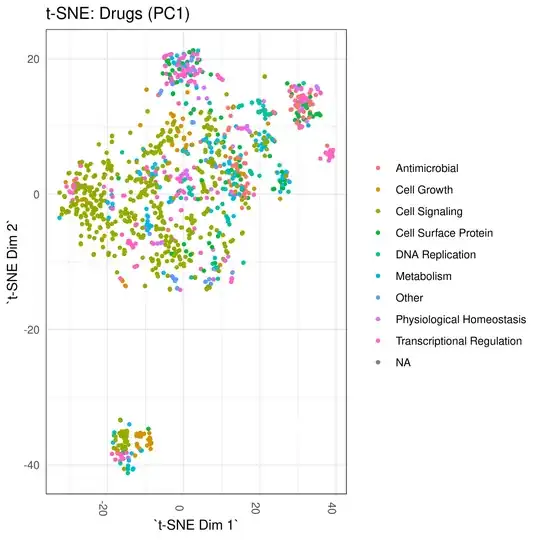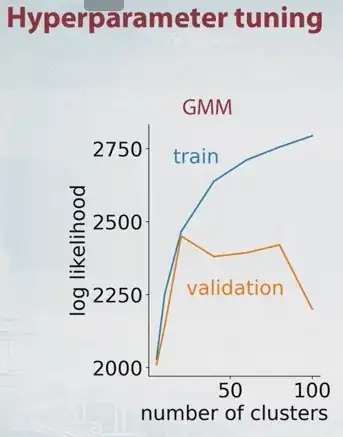Consider a crossed design with 3 operators and 4 instruments. Interest is in the instrument effect.
Could you explain me the difference in standard errors of the fixed effects between the two seemingly equivalent models below?
Model 1
- fixed effect: instrument
- random effect: operator, operator*instrument
Model 2
- fixed effect: instrument
- random effect: operator*instrument
Here is the data is
Operator Part Instrument new Y
Janet 1 1 9.110079
Janet 1 2 8.142277
Janet 1 3 11.26354
Janet 1 4 9.919439
Janet 2 1 11.74011
Janet 2 2 8.377658
Janet 2 3 9.942735
Janet 2 4 10.40425
Janet 3 1 10.20466
Janet 3 2 8.379429
Janet 3 3 12.22024
Janet 3 4 12.61237
Janet 4 1 8.807384
Janet 4 2 8.030572
Janet 4 3 13.08309
Janet 4 4 10.01584
Janet 5 1 8.099196
Janet 5 2 8.364157
Janet 5 3 13.41016
Janet 5 4 14.76918
Janet 6 1 8.106056
Janet 6 2 8.10354
Janet 6 3 8.482492
Janet 6 4 8.154287
Janet 7 1 7.111584
Janet 7 2 7.903323
Janet 7 3 6.939069
Janet 7 4 5.344401
Janet 8 1 7.485183
Janet 8 2 7.817825
Janet 8 3 6.845474
Janet 8 4 6.899052
Bob 1 1 8.23373
Bob 1 2 8.057511
Bob 1 3 9.661005
Bob 1 4 8.094992
Bob 2 1 8.087004
Bob 2 2 8.088673
Bob 2 3 8.220318
Bob 2 4 9.147579
Bob 3 1 8.864142
Bob 3 2 8.061816
Bob 3 3 8.925117
Bob 3 4 8.976143
Bob 4 1 8.056059
Bob 4 2 8.084911
Bob 4 3 8.348538
Bob 4 4 8.548607
Bob 5 1 8.069039
Bob 5 2 8.007888
Bob 5 3 9.626642
Bob 5 4 9.733307
Bob 6 1 8.024802
Bob 6 2 8.005744
Bob 6 3 8.434947
Bob 6 4 8.453447
Bob 7 1 7.999767
Bob 7 2 7.984759
Bob 7 3 7.365404
Bob 7 4 7.656814
Bob 8 1 7.882578
Bob 8 2 7.758508
Bob 8 3 4.55524
Bob 8 4 7.540994
Frank 1 1 9.481814
Frank 1 2 8.193099
Frank 1 3 8.398606
Frank 1 4 11.7037
Frank 2 1 9.949564
Frank 2 2 8.107129
Frank 2 3 9.163364
Frank 2 4 10.6489
Frank 3 1 9.327477
Frank 3 2 8.012667
Frank 3 3 8.249733
Frank 3 4 8.265833
Frank 4 1 9.037129
Frank 4 2 8.011473
Frank 4 3 9.851276
Frank 4 4 9.407426
Frank 5 1 9.109919
Frank 5 2 8.015916
Frank 5 3 9.295068
Frank 5 4 8.891632
Frank 6 1 8.259335
Frank 6 2 8.0005
Frank 6 3 8.595918
Frank 6 4 8.371596
Frank 7 1 7.938315
Frank 7 2 7.985911
Frank 7 3 7.619531
Frank 7 4 7.396689
Frank 8 1 7.448111
Frank 8 2 7.781902
Frank 8 3 5.067086
Frank 8 4 5.147675
Janet 1 1 8.421558
Janet 1 2 8.049732
Janet 1 3 8.737006
Janet 1 4 9.225913
Janet 2 1 9.93779
Janet 2 2 8.790311
Janet 2 3 10.30329
Janet 2 4 12.84334
Janet 3 1 9.853942
Janet 3 2 8.112191
Janet 3 3 8.553654
Janet 3 4 14.68811
Janet 4 1 8.088195
Janet 4 2 8.035893
Janet 4 3 8.689999
Janet 4 4 8.565889
Janet 5 1 8.90175
Janet 5 2 8.082496
Janet 5 3 12.3517
Janet 5 4 9.292084
Janet 6 1 8.042006
Janet 6 2 8.031552
Janet 6 3 8.23479
Janet 6 4 8.092882
Janet 7 1 5.905284
Janet 7 2 7.99629
Janet 7 3 7.978668
Janet 7 4 7.983601
Janet 8 1 7.768969
Janet 8 2 7.910555
Janet 8 3 5.9105
Janet 8 4 6.014394
Bob 1 1 8.680909
Bob 1 2 8.090483
Bob 1 3 8.846608
Bob 1 4 8.216097
Bob 2 1 9.23454
Bob 2 2 8.072461
Bob 2 3 9.365295
Bob 2 4 8.66944
Bob 3 1 8.700653
Bob 3 2 8.021997
Bob 3 3 10.73211
Bob 3 4 8.270761
Bob 4 1 8.621898
Bob 4 2 8.221656
Bob 4 3 8.873718
Bob 4 4 10.14723
Bob 5 1 8.612726
Bob 5 2 8.013137
Bob 5 3 8.854139
Bob 5 4 10.05516
Bob 6 1 8.238818
Bob 6 2 8.002169
Bob 6 3 8.283516
Bob 6 4 8.060694
Bob 7 1 7.811573
Bob 7 2 7.972366
Bob 7 3 7.550927
Bob 7 4 7.347237
Bob 8 1 7.552504
Bob 8 2 7.821391
Bob 8 3 6.153354
Bob 8 4 5.286279
Frank 1 1 8.521943
Frank 1 2 8.054066
Frank 1 3 8.235211
Frank 1 4 8.187873
Frank 2 1 9.711441
Frank 2 2 8.05149
Frank 2 3 10.82414
Frank 2 4 10.43218
Frank 3 1 11.1396
Frank 3 2 8.341912
Frank 3 3 8.197568
Frank 3 4 10.77953
Frank 4 1 9.186246
Frank 4 2 8.231934
Frank 4 3 9.107861
Frank 4 4 9.336874
Frank 5 1 8.156753
Frank 5 2 8.033916
Frank 5 3 11.35433
Frank 5 4 9.261594
Frank 6 1 8.309988
Frank 6 2 8.03288
Frank 6 3 8.337066
Frank 6 4 8.167594
Frank 7 1 7.240201
Frank 7 2 7.947292
Frank 7 3 6.137034
Frank 7 4 7.598853
Frank 8 1 5.868138
Frank 8 2 7.896514
Frank 8 3 5.148703
Frank 8 4 6.364151



